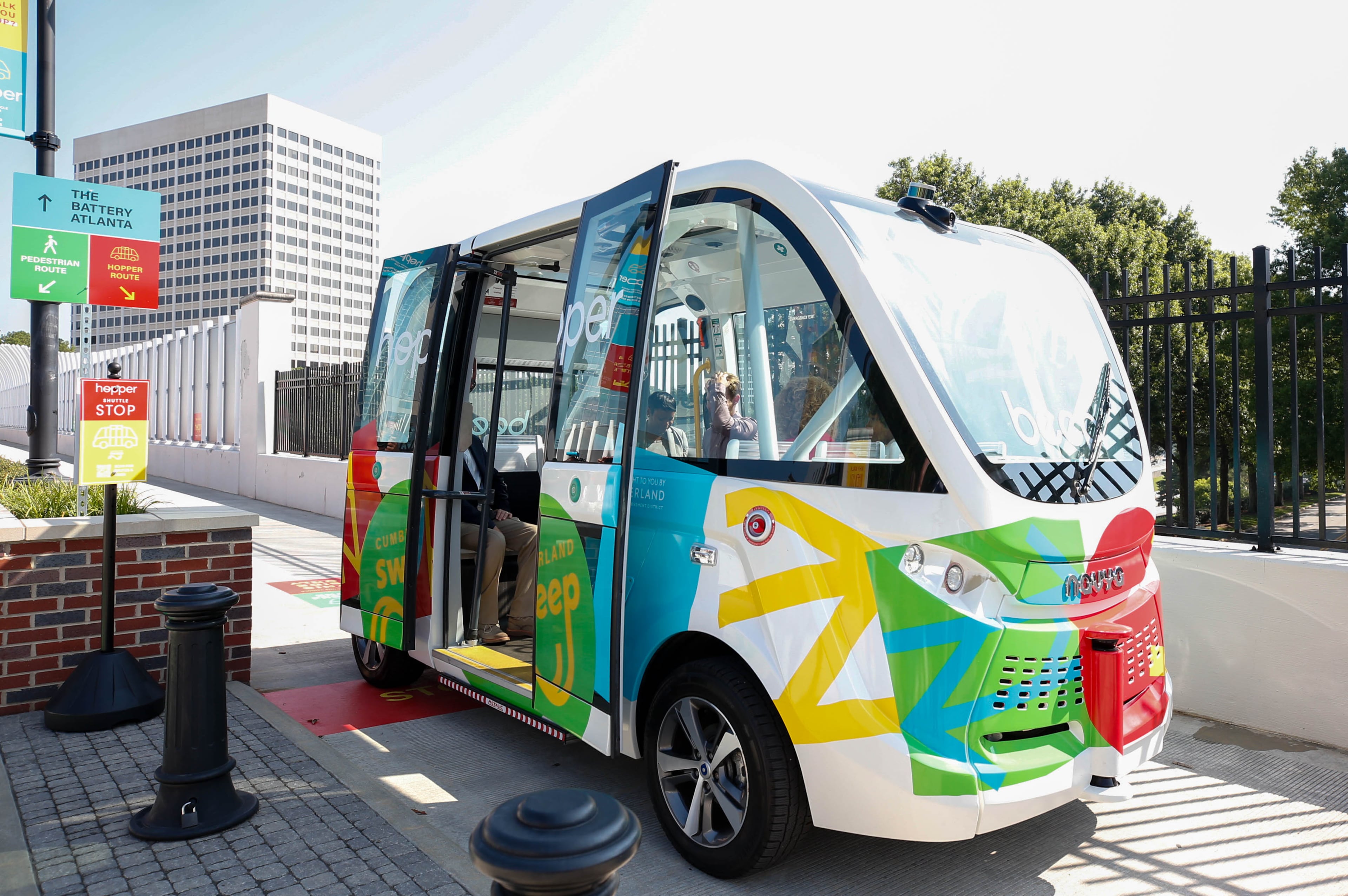CobbLinc first public transit agency to deploy AV tech with Cumberland shuttle
Long a key testing ground for personal autonomous vehicle technology, the Atlanta metro is soon to become a laboratory for driverless public transit.
When Cobb County launches its autonomous network in the Cumberland area, CobbLinc will be the first public transit agency in the state to deploy AV technology.
Eight driverless shuttles on a roughly 3-mile route will connect key landmarks within the lively entertainment and business district, including Truist Park and The Battery Atlanta, Cumberland Mall and the Chattahoochee River National Recreation Area.
But officials with the project also see an opportunity to test a potential solution to one of the more challenging mobility dilemmas facing transit operators: How to provide first- and last-mile service effectively.
“It’s the biggest gap we have in public transportation,” said Joe Moye, whose company Beep piloted the Cumberland Hopper shuttle as a test run for the expanded service that’s set to begin in 2027.
Smooth first- and last-mile connections make public transit more accessible and can encourage people to opt for transit instead of driving themselves or using rideshare services. It can be costly to provide at scale, however.
CobbLinc and other transit agencies have been experimenting with microtransit as a solution for several years now, but with human drivers instead of autonomous vehicles.
MARTA tested microtransit zones in 2022 and is bringing them back in 2026 as part of its bus network redesign. Gwinnett County operates microtransit zones in Snellville, Norcross and Lawrenceville.
In addition to the Cumberland Hopper pilot, autonomous microtransit programs have been tested in places like Peachtree Corners, where a shuttle operated by May Mobility connects different locations around the city. Next year, the Atlanta Beltline plans to launch a micromobility pilot with Beep to bring driverless shuttles to neighborhoods near the Westside trail.
The Cumberland Community Improvement District has been trying to improve mobility within the district for years, Executive Director Kim Menefee said. The area is divided by interstates and other busy roads like Cobb Parkway that make it easy to get to the district but difficult to get around once there.
“We needed another mobility that really addressed first- and last-mile connectivity,” Menefee said.
A master planning process in 2017 led to plans for dedicated walking and bike paths as well as the Beep pilot program. The Cumberland Hopper, as the shuttle service was dubbed, launched in 2023 and ferried 11,000 passengers before wrapping up at the end of 2024.
The Hopper operated two routes, one aimed primarily at visitors to Braves games and the Battery, and another serving office workers at the Galleria Office Park. The two test cases helped show how different types of riders might use the service, as well as what kind of demand there would be.
“The Hopper showed us what was possible,” said Stephen Gentry, the CID’s treasurer.
Expanding the pilot was made possible primarily with funding from the Federal Transit Administration, which awarded CobbLinc with a $6.6 million grant that will cover three years of service. The CID, which funded the pilot program, is also putting up the matching funding for the expansion, about $1.2 million.
The exact logistics of the expanded program are still being worked out, including the route, service hours and what vehicle will be used. Beep doesn’t plan to use the Hopper vehicle and is evaluating several options, including buses made by Holon, which has partnered with Beep elsewhere.
While the Hopper ran on a dedicated pathway, the future route is expected to bring the vehicles onto roadways and alongside general traffic.
The vehicles will be free to ride and accessible for people with disabilities. At the start, the vehicles are expected to operate with an attendant to help riders navigate the new technology.
Cobb County is excited to experiment with new technology, said Morgan Simmons-Gibson, the deputy director of transportation. If autonomous vehicles are successful in the Cumberland area, it could be a solution for microtransit elsewhere in the county.
“This is a good testing ground,” she said. “If we’re able to position ourselves to test out this technology early, and have the partners that allow us to be able to do that, it allows us to be able to really understand how this works with our system.”


